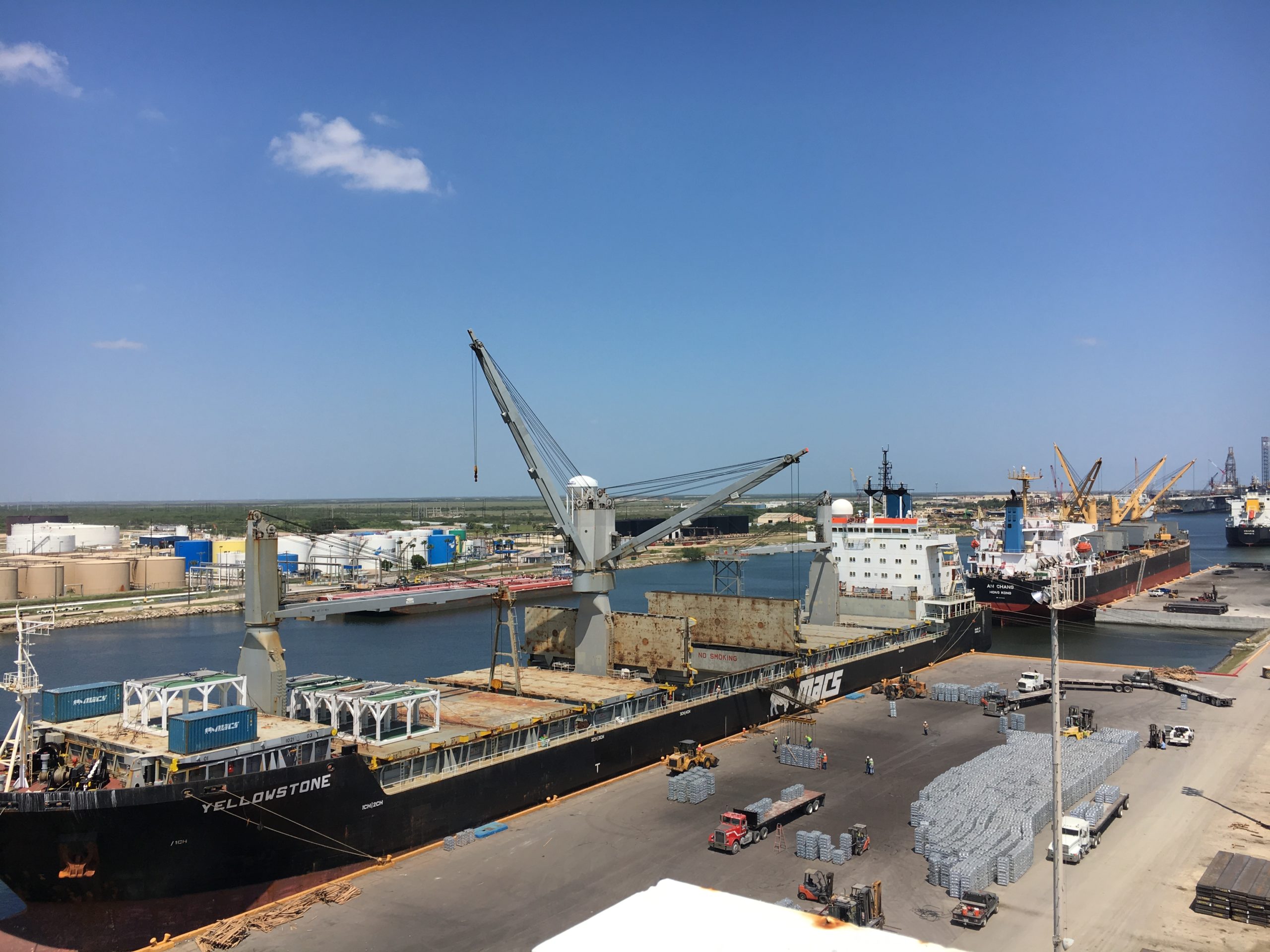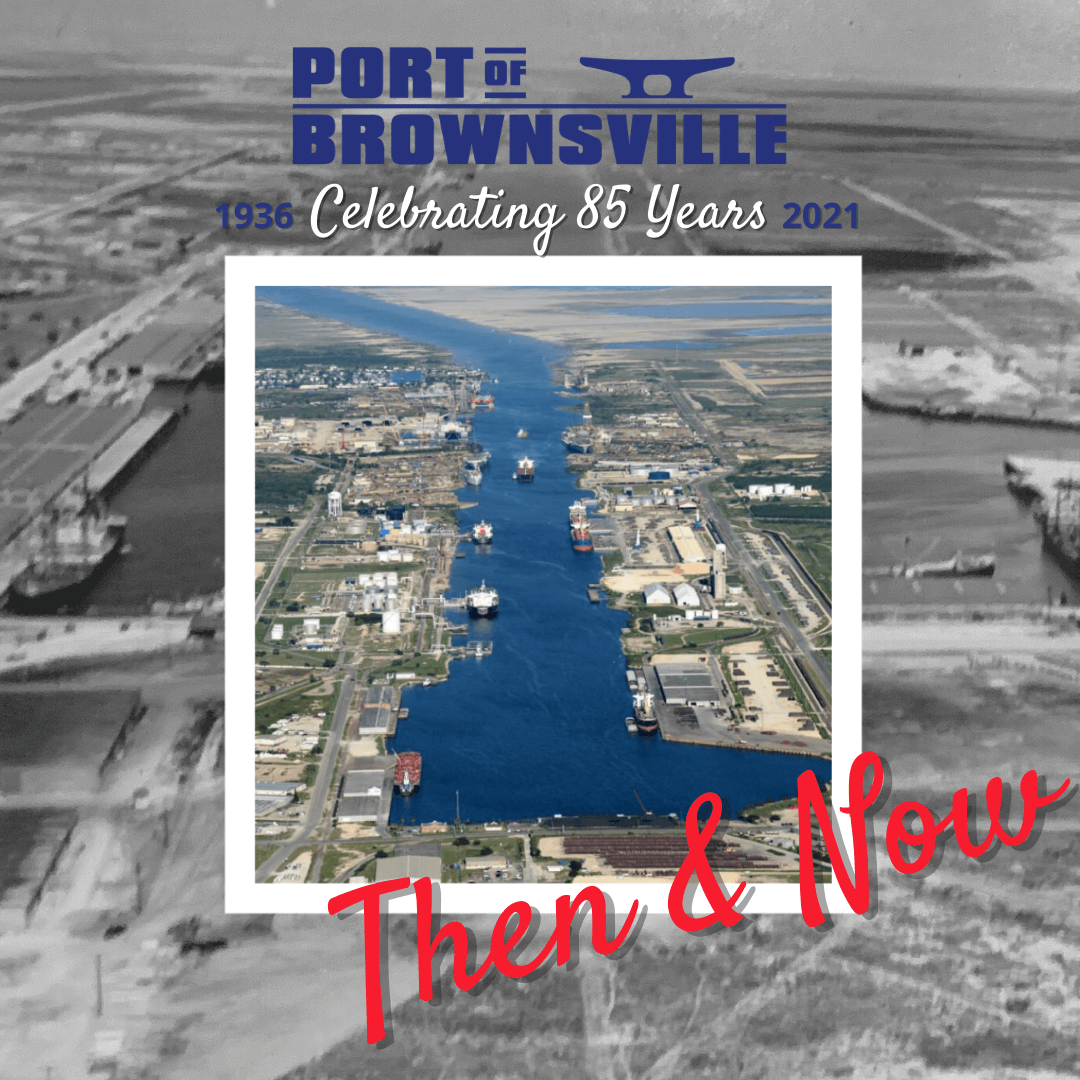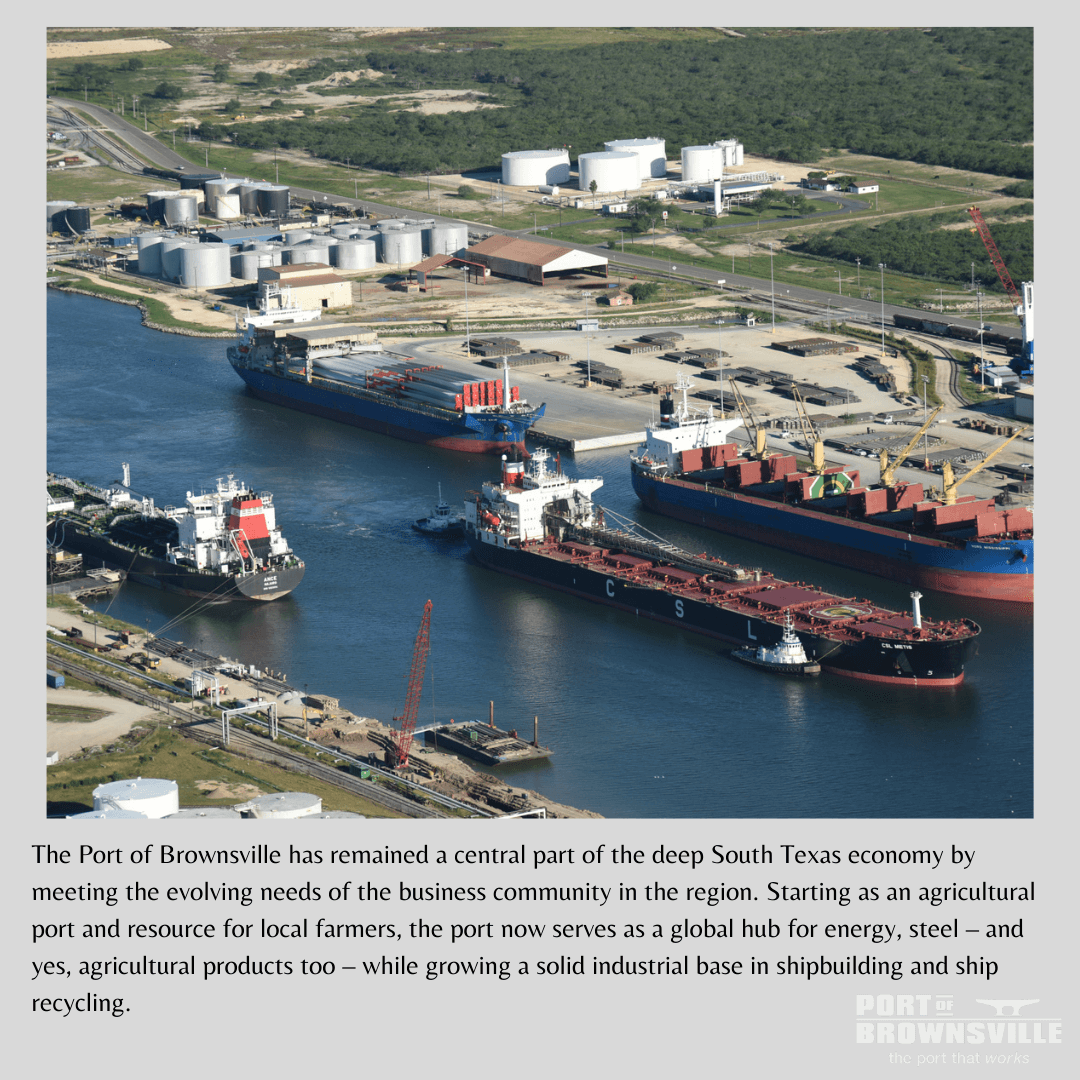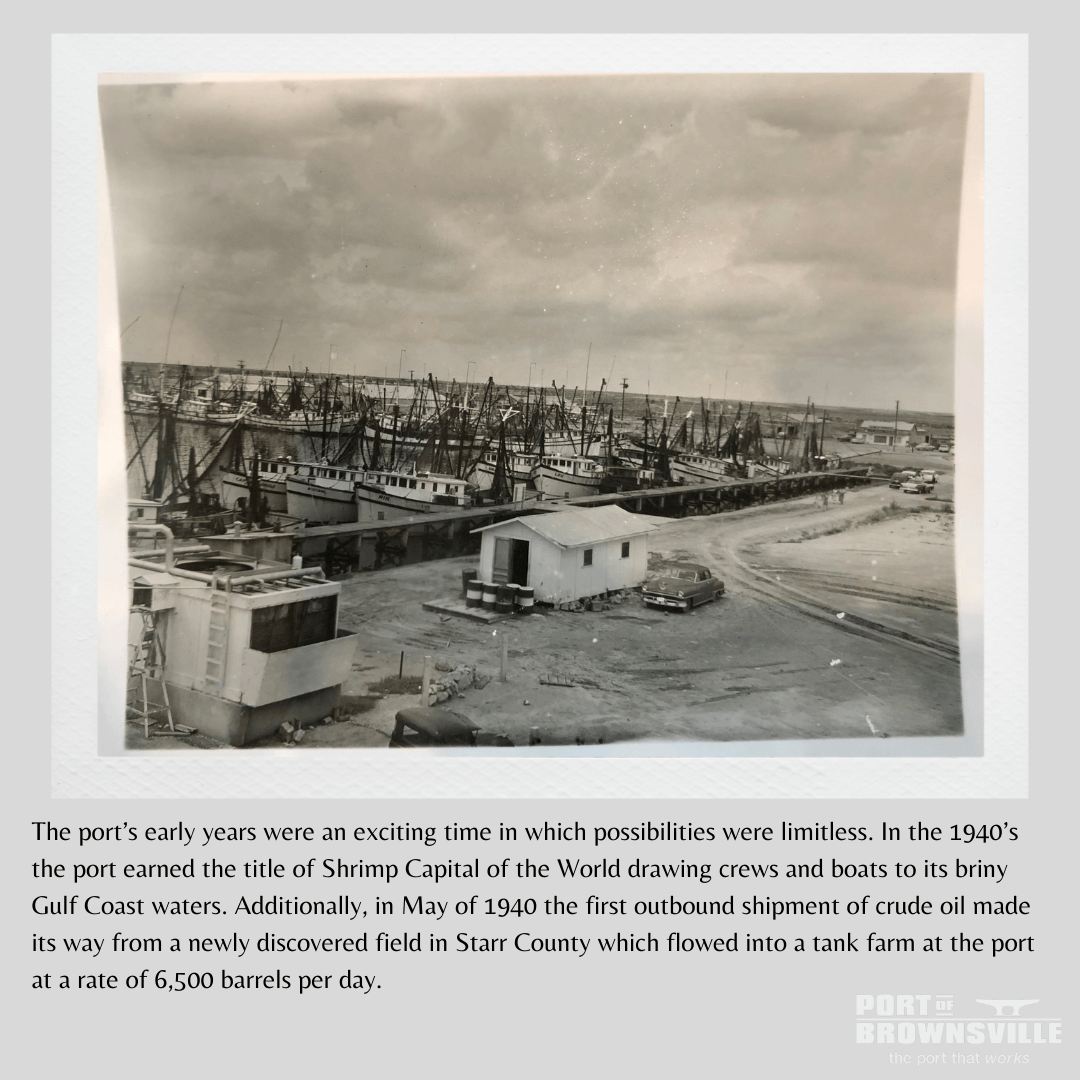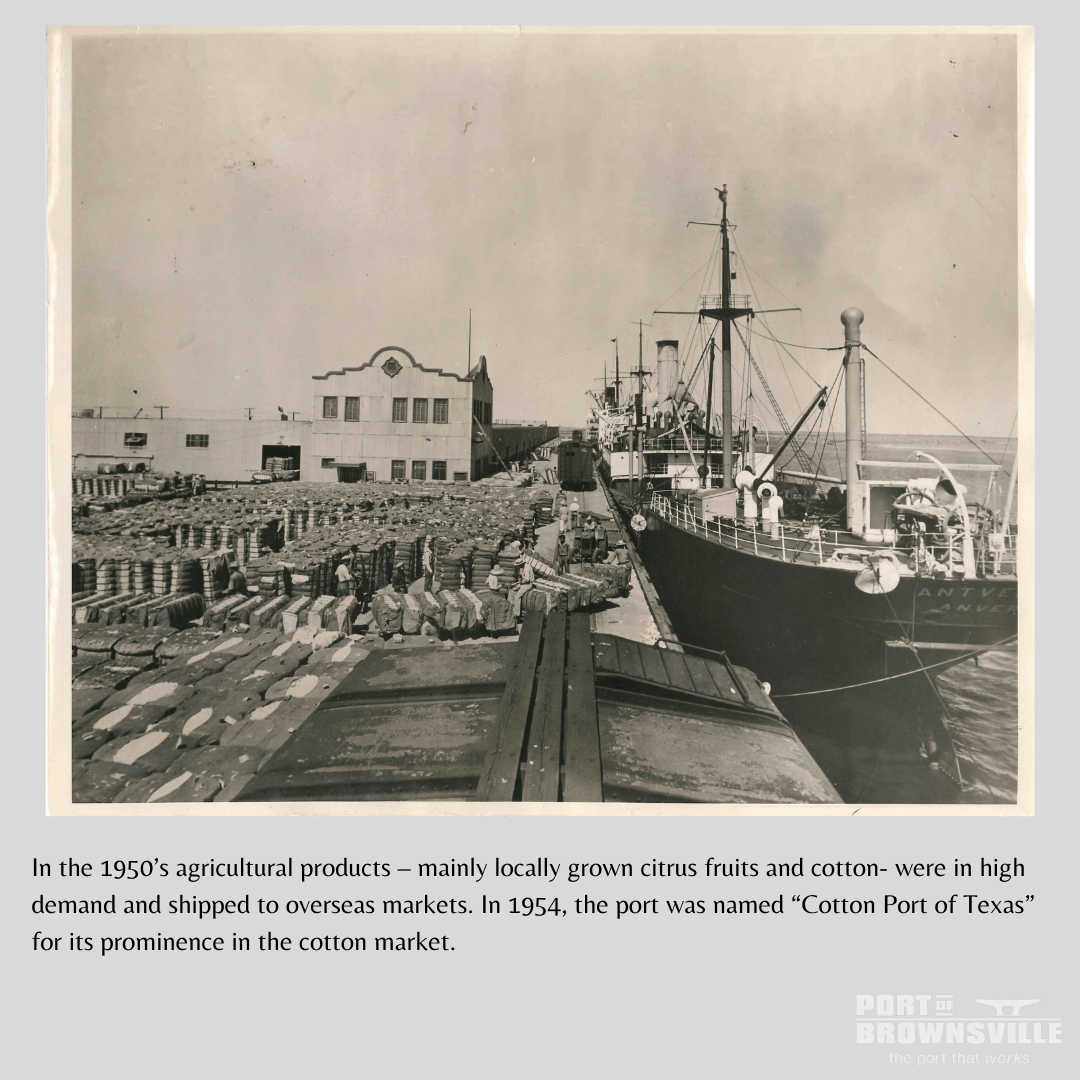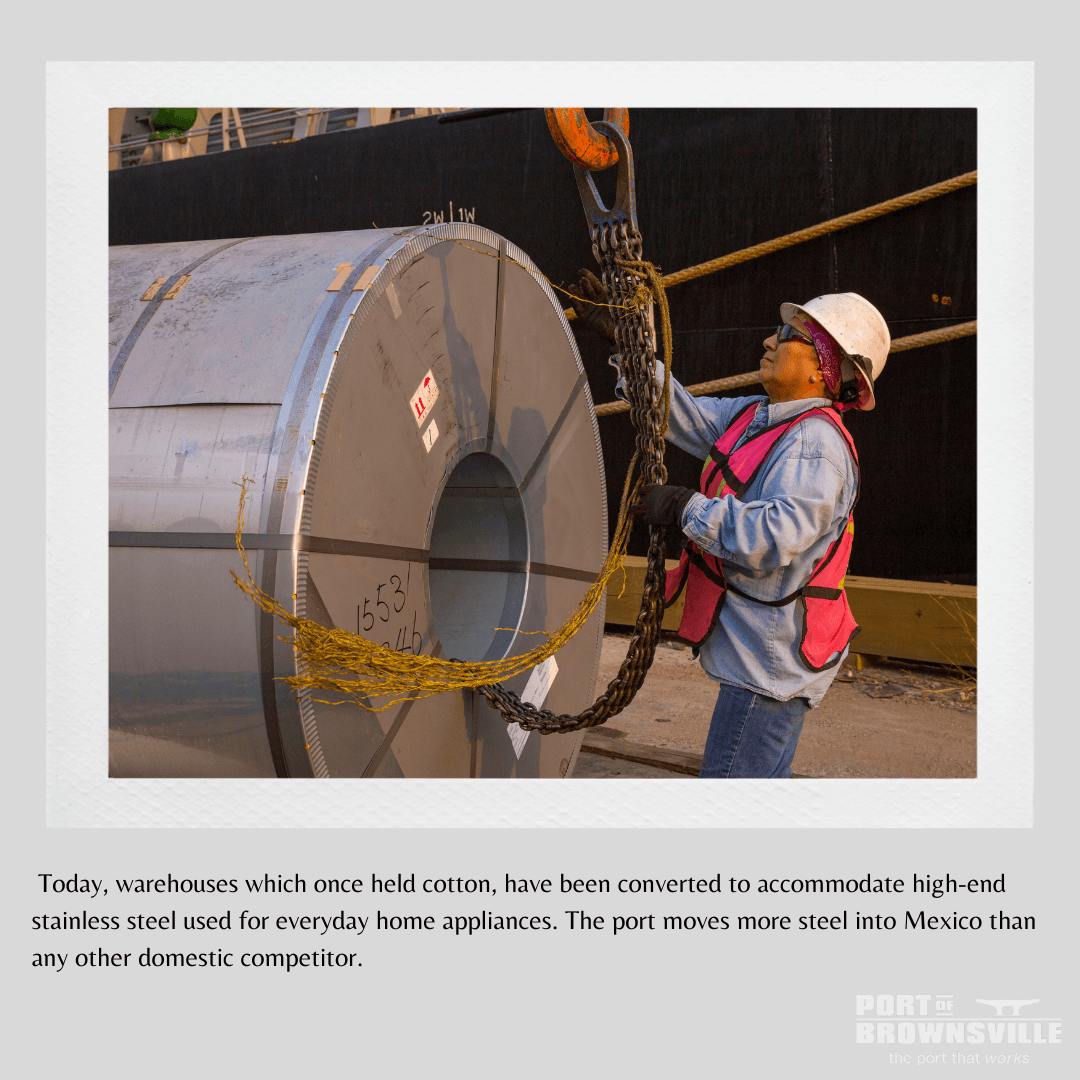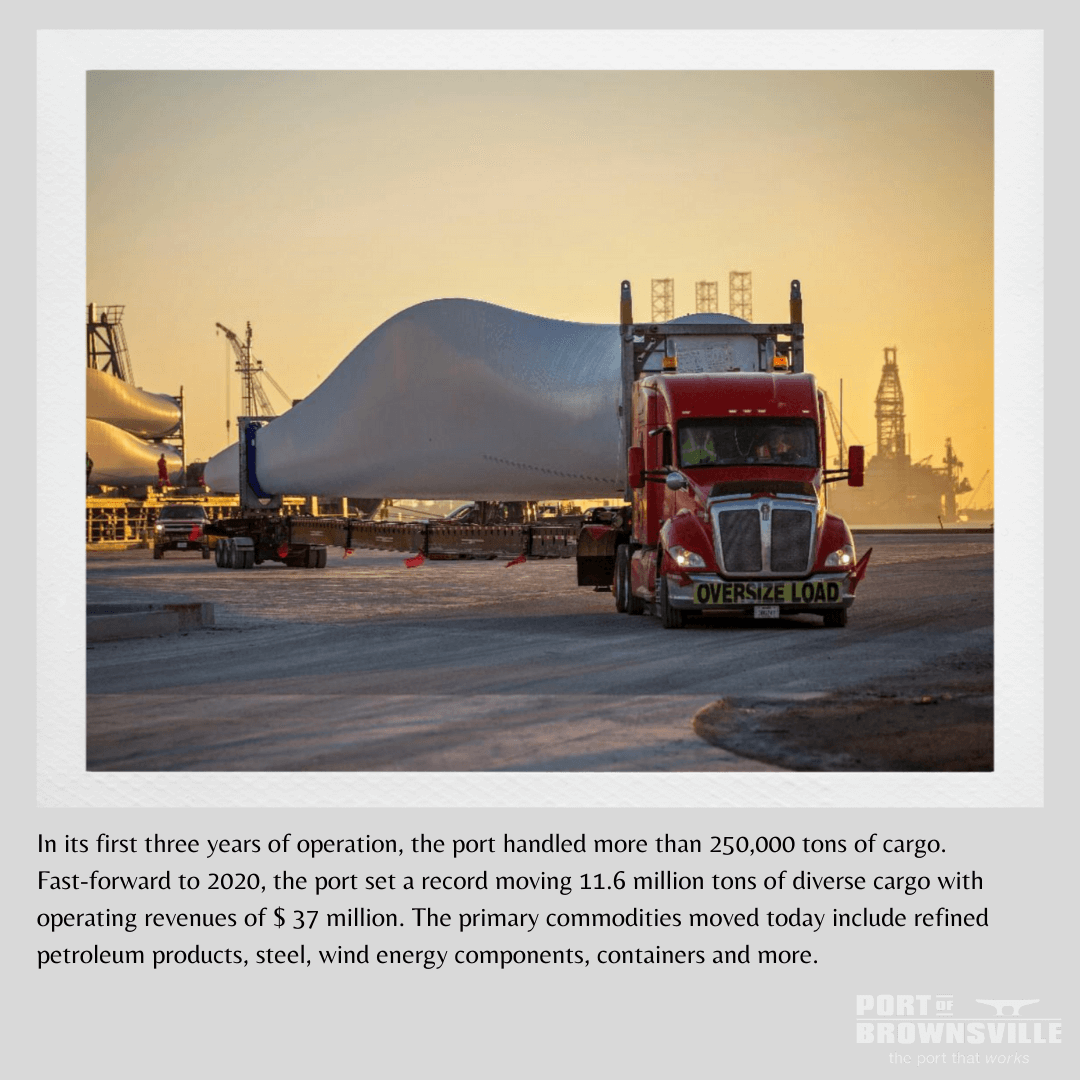Editor’s Note: This article is featured in the new edition of the Port of Brownsville Directory.
With operating revenue records in five of the last six years, it’s now more likely and achievable for the Port of Brownsville to make significantly large infrastructure investments – even during trying fiscal decelerations.
Growing the port has never been more important. Doing it with thoughtful and strategic planning is a deliberate path forward set by the Brownsville Navigation District Commission to protect the interests of port tenants and users, constituents and port assets. To grow requires reliable and recurring revenue. It takes money and planning.
In FY 2019, the port set an all-time annual revenue record of $25 million, topping 2018’s high watermark of $24.2 million.
Record revenues are one thing, but according to a recent study by Moody’s Investors Service, the Port of Brownsville ranks third among all ports surveyed for strong financial resilience.[1] The Moody’s analysis evaluated U.S. ports on a range of key factors surrounding financial responsibility like the ability to handle the impacts of a significant decline in cargo volume, financial liquidity and debt service coverage ratio. Weighing these important factors, the analysis ranks the Port of Brownsville among the most stable in the nation and better able to weather today’s unique economic challenges.
And furthermore, for the eighth consecutive year, the Brownsville Navigation District Finance Department earned the Certificate of Achievement for Excellence in Financial Reporting by the Government Finance Officers Association of the United States and Canada for its 2019 comprehensive annual financial report (CAFR).
The Certificate of Achievement is the highest form of recognition in the area of governmental accounting and financial reporting, and its attainment represents a significant accomplishment by a unit of government and its management.
These examples of financial accountability and prudent preparation make investing in port infrastructure more achievable.
For example, the port received two new mobile harbor cranes in January 2020 to keep up with growing demand for additional on-dock lifting capacity. The twin cranes feature a powerful lifting curve with a maximum lifting capacity of 138 short tons each. With 14 axels and 28 wheels, mobility is a key feature of the duo’s $8 million asking price. Purchasing the two new cranes was made more affordable with the trade-in of an existing crane, which greatly reduced the out-of-pocket cost even further. The port now has three mobile harbor cranes, used for a wide variety of lifting tasks, specializing in project cargo, steel slabs and steel coils.
Other big ticket items include channel-related projects like new Liquid Cargo Dock 6, expected to be in service in Q3 2020, along with the newly reconditioned Liquid Cargo Dock 3, and associated maintenance dredging representing a combined investment of nearly $28 million.
The port also completed the rehabilitation of the Bulk Cargo Dock in 2020, providing improved waterside access to a 3 million-bushel grain elevator operated by WestPlains LLC, winner of the Port of Brownsville Chairman’s Award in 2018. WestPlains and the port are partnering to modernize and enhance the operational efficiency of the specialized dock, with the port investing $5 million in the project. The privately-held company has already made significant investments in Phase 1 of its improvement strategy at the facility and plans to demonstrate further confidence with significantly larger investments in Phase 2 to maximize capacities of WestPlains’ Brownsville home.
To improve port access and ease urban traffic, the Cameron County Regional Mobility Authority is partnering with the port, Cameron County and TxDOT to construct the South Port Connector Road, designed to connect the port with State Highway 4 and ultimately the nearby international Veterans Bridge – which itself is adding a $12.8 million expansion featuring three additional commercial lanes and four passenger lanes crossing the Rio Grande into Mexico.
Construction of the $26 million South Port Connector Road will begin in mid-2020, after receiving environmental clearance in 2019. The new access road also creates a convenient connection to the neighboring and nearby SpaceX launch site.
The port’s internal road improvement project was also recently completed. TxDOT partnered with the port on the $2.2 million project to resurface and improve many of the port’s primary internal routes, including important enhancements to the Foust Road entrance. Better internal roads mean delivery of products and cargo with fewer bumps along the way.
Soon to be under construction is a major terminal development to maximize the efficient loading of open-top gondola railcars for steel slab shipments into Mexico. The port’s role as the leading U.S. port for transshipping steel across the southern border is growing, thanks to new steel mill developments in nearby Monterrey, Mexico. The Port of Brownsville is planning to spend millions to enhance both volumes and velocity of steel moving through the port.
Additional outside storage capacity also experienced dramatic expansion at the port in 2020, now totaling more than 62-acres of purpose-built facilities to accommodate heavy point-load-bearing cargo, like wind energy nacelles – some weighing more than 112 tons each. Along with hubs, tower sections and windmill blades (the largest reaching nearly 250-feet-long), the Port of Brownsville ranks among the leading U.S. ports capable of receiving, storing and moving these massive components. And due to the prevailing winds of south Texas, combined with the abundance of available land on both sides of the U.S. Mexico border, windmill farms are growing all across the region at an ever-increasing pace.
And it’s not just the port making big investments. Many port tenants are spending millions of dollars to grow their businesses. Refined petroleum storage tank farms are sprouting up all along the Port of Brownsville ship channel. Combined estimates place tank farm storage capacity – underway or complete – to now be nearly 6.4 million barrels. And there’s more under construction.
Growth is clearly evident around every turn at the Port of Brownsville, the port that works.
